In the mining, building materials, chemical and other industries, ball mills are key equipment for material crushing. But many users face a question when purchasing: What is the difference between dry ball mills and wet ball mills? Which one is more suitable for my production needs?
This article will compare the working principle, applicable materials, grinding efficiency, energy consumption, maintenance cost and environmental protection from multiple dimensions to help you make a more informed choice.
1. Comparison of working principles
1.1 Dry ball mill
• The material is ground in a dry state and the powder is discharged by airflow or mechanical force.
• Applicable to materials that are water-averse or need to be stored dry (such as cement, quartz sand, non-metallic minerals).
• A dust removal system (such as cyclone separator, bag dust collector) is required to reduce dust pollution.
1.2 Wet ball mill
• The material is mixed with water or liquid medium and ground to form a slurry before being discharged.
• Applicable to materials that require fine grinding such as metal ores and ceramic raw materials.
• Liquid medium can reduce material adhesion and improve grinding efficiency.
2. Comparison of applicable materials
| Comparison items | Dry ball mill | Wet ball mill |
| Applicable industries | Cement, building materials, chemicals | Metal mines, ceramics, chemicals |
| Applicable materials | Quartz sand, limestone, coal powder | Gold mines, copper mines, bauxite, ceramic glaze |
| Moisture requirements | Material to be dried (moisture <5%) | Material containing water slurry can be processed |
Conclusion:
• Dry type is suitable for materials that are water-averse or require dry storage.
• Wet type is suitable for materials for metal mines, fine grinding or subsequent wet processes.
3. Grinding efficiency and finished product particle size
3.1 Wet ball mill:
• Liquid medium reduces material adhesion, making grinding more uniform and more efficient.
• The finished product particle size is finer (up to several microns), suitable for ultrafine powder processing.
3.2 Dry ball mill:
• It is easy to produce "over-grinding" or material adhesion, and the efficiency is low.
• The finished product particle size is coarse (usually more than tens of microns), which is suitable for general crushing needs.
Applicable scenarios:
• If ultra-fine powder is required (such as high-purity metal powder, nanomaterials), wet type is preferred.
• If only ordinary crushing is required (such as cement raw material, coal powder), dry type is more economical.
4. Energy consumption and maintenance cost
| Comparison items | Dry ball mill | Wet ball mill |
| Energy consumption | Higher (need to overcome air resistance) | Lower (liquid assisted grinding) |
| Maintenance cost | Simple (no liquid corrosion) | Higher (rust prevention, wastewater treatment required) |
| Equipment life | Longer | May be shortened by liquid medium |
Recommendation:
• Dry type is suitable for the needs of limited budget and simple maintenance.
• Wet type is suitable for high-precision grinding, but the cost of wastewater treatment needs to be considered.
5. Environmental protection comparison
5.1 Dry ball mill:
• High risk of dust pollution, need to be equipped with an efficient dust removal system (such as bag dust collector).
• Suitable for low environmental protection requirements or closed factories.
5.2 Wet ball mill:
• No dust, but wastewater needs to be treated and must meet environmental emission standards.
• Suitable for areas with strict environmental protection control.
6. How to choose? Dry vs. Wet
| Selection factors | Choose dry | Choose wet |
| Material properties | Avoid water, need to be dry | Can be wet-milled, need ultrafine powder |
| Grinding requirements | General crushing | High-precision grinding |
| Environmental requirements | Acceptable dust control | Need to be dust-free but can handle wastewater |
| Cost budget | Low initial investment | High operating cost |
Recommended solution:
• Metal ore, ceramic glaze → wet ball mill
• Cement, coal powder, non-metallic ore → dry ball mill
7. FAQ
Q1: Which ball mill is more energy-efficient, dry or wet?
Wet mills are usually more energy-efficient because liquid media can reduce frictional resistance.
Q2: How to deal with the wastewater from wet ball mills?
Sedimentation tanks, filtration systems or chemical treatments can be used to ensure compliance with environmental standards.
Q3: Can both dry and wet mills be used?
Some specially designed ball mills can be switched, but it is usually recommended to use a dedicated machine for a specific purpose to avoid equipment loss.
Dry and wet ball mills have their own advantages and disadvantages, which depends on the material characteristics, grinding requirements and environmental protection costs. I hope this article can help you make a more informed choice!
For further consultation on ball mill selection, don't hesitate to get in touch with us!











